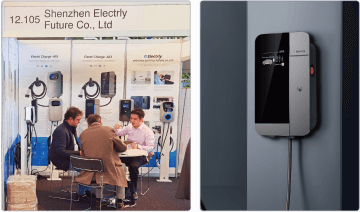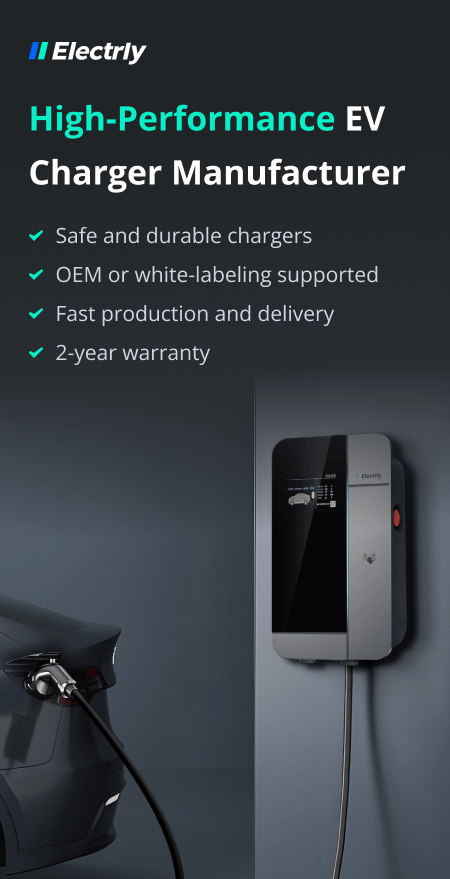New EV drivers may struggle to understand their new purchase, which may be significantly different from traditional cars in many ways. For instance, with many, there is initial confusion about “how to ‘refuel’ my EV.” Should one charge with the cord that came with the vehicle or install a new charging installation at home?
Understanding the differences can help you decide which to purchase and which to use. Let’s look at the differences between these charging levels to help you see which may be more suited to your driving needs and style.
Basic States
The comparison table below shows - at a glance - the difference between Level 1 and Level 2 EV chargers based on electric and power specifications, estimated charging time, typical locations, current type, and connector type.
Check out other detailed charging guide from Electrly >> Level 1 Charging Guide, Level 2 Charging Guide
Level 1 |
Level 2 |
|
| Power output | 3.5 kW | 7kW - 22kW |
| Voltage output | 120 V | 208 to 240 V |
| BEV Charging time from empty
(i.e. 60 kWh battery pack) |
Over 10 hours | 2 to 8 hours |
| Current type | AC | AC |
| Availability | Typically comes with most EVs | Can be installed at home or available at public charging station |
| Estimated range for one hour of charging | 5 to 10 miles | 20 to 80 miles |
| Convenience | Charging is slow and has a limited range | Longer range and faster charging |
| Ease of use | Can be plugged into regular household outlets | Requires professional installation |
| Safety | Requires a GFCI-protected outlet | Requires a dedicated breaker, circuit, and installation or grounding for safety |
Charging Speed
The time it takes to charge an EV using Level 1 or 2 chargers depends on various factors including the charger power delivery, the battery size, and the onboard battery converters. Getting a definitive idea of their charging speed can help you better manage your charging schedule and plan your trip with more confidence. Here are estimates to help you get started.
Level 1 charger
Consider your vehicle is equipped with a 60 kWh battery, and your come-with-the-car Level 1 charger provides about 10 miles of range per hour at most of the charging, which would take around 10 hours to get 100 miles of range, and will take nearly 20 hours to charge fully.
Level 2 charger
Level 2 chargers are estimated to charge EV batteries about 5 to 15 times faster than a Level 1 charger would, depending on the power output and the type of EV one is charging. Typically, you can get between 20 to 80 miles per hour of charging. That is, about a 25-mile range (for 7.4kW output), 37 miles ( for 11kW), and 75 miles (for 22kW) for an hour of charging using a Level 2 charger.
It is important to note that the times are only estimates and may differ from your immediate reality.
Charging Ports

Although J1772 charging connector standards are common, they are not the only ones available. Some EV manufacturers like Tesla design their cars to be compatible only with their proprietary charging plug. Note that, unlike traditional Level 1, 2, and 3 ports on most EVs, Tesla’s charging port is available for both AC and DC fast charging.
Click here to learn more about EV charging cables and plugs.
Charging ports of Level 1 chargers
In North America, the Type 1 J1772, or J-plug, is the most commonly used connector standard for Level 1 charging, and Tesla has their own charging connector for all level charging. The Type 2 J1772 port, however, also known as the Mennekes plug, is widely used in the EU market.
Charging ports of Level 2 chargers
The J1772 port as well as the J1772 Type 2 port can also be used for Level 2 charging, with Tesla vehicles being the exception. However, Tesla offers J1772 adapters for Tesla owners so that they can charge their vehicles at regular Level 2 charging stations.
Application Scenarios
Levels 1 and 2 chargers are typically used in different scenarios. The most common of them are outlined below:
Level 1
Level 1 EV chargers are commonly used at home as ‘plug and play’ or as emergency backup on trips where it might be difficult to locate a charging station in your area. It may also be used as portable EV charging since the charging cord is convenient for both storage and deployment.
Level 2
Level 2 chargers are usually installed in public charging stations as well as public locations with parking spaces such as educational facilities, entertainment venues, and hotels. They may also be installed in homes and workplaces as they are ideal for charging overnight at home or charging through long idle hours at the workplace.
Installation
To live an EV life with ease and comfort, having Level 1 or Level 2 charging equipment within reach is a must. They allow you to better manage your commute schedule as well as your travel plans. Continue to read more about installing an EV charger for your vehicle.
Level 1
A Level 1 charging station accompanies nearly every new EV purchase. It needs no special installation or utility panel upgrade and can be connected to standard 120-volt grounded wall outlets in residential apartments.
Level 2
Level 2 charging stations, on the other hand, may need special installation. For residential uses, the charging equipment may require the installation of 240V outlets on a dedicated circuit, which you are likely not recommended to do it yourself without electrical certifications. It is standard to check with a licensed electrician to know if your state laws require permits to install such and if your electric panel must be upgraded first.
What Are The Pros and Cons Of Level 1 & Level 2 Charging?
No charger type can be considered outrightly better than the other. Knowing the pros and cons of the different charger types can help you make a more confident buying decision and choose the one that best fits your use cases.
Level 1
Pros
- Zero-cost: Level 1 chargers are free since they are supplied with most EV purchases.
- Can be plugged into regular outlets: Level 1 chargers use standard outlets. Most homes have 120V outlets already installed in their garages and no need for special installation.
- Perfect for low-mileage drivers: Level 1 chargers are good enough for people who drive under 30 miles a day. They may also be perfect for plug-in hybrid vehicles (PHEVs) with smaller battery sizes than regular battery electric vehicles (BEVs).
Cons
- Slow charging: The charging speed of Level 1 chargers is comparatively slow. Typically, it takes nearly one day to fully charge most EVs using a Level 1 charger.
Level 2
Pros
- Fast charging: A Level 2 charger can charge an EV about 5 to 15 times faster than a Level 1 charger. It is a faster and more efficient charging solution compared to the come-with-the-vehicle Level 1 charger.
Cons
- Requires installation: Level 2 charging stations require a 240V plug which may be twice the power specification of the regular wall outlets. Therefore, you may need to hardwire the equipment into the electrical system of your property, which, in many cases, requires a licensed professional.
Which One Is Better For Me? Level 1 or Level 2 Charging?
The answer to which is better isn’t exactly cast in stone. It all depends on the individual needs and the use case. For instance, a Level 1 charger may be fine if you don’t use your EV as much and do not travel long distances. Otherwise, if you drive frequently daily, it is better to install a Level 2 charging station in your garage.
We recommend making the following considerations before deciding which to settle for:
Cost
Since Level 1 chargers typically come with EV purchases, they cost nothing. All you need to do is to plug it directly into your wall outlets. You’d need to commit more if you need a Level 2 charger. A Level 2 charger may cost between $250 and $1,000, depending on its features and power. The bill of installing a Level 2 charging station at home may run into more thousands considering additional labor and material.
Charging speed
Level 1 chargers, though a great option for their affordability, can be significantly slower than Level 2 chargers; little wonder why they are also known as trickle chargers. Where a Level 2 charger can get you 20 to 80 miles an hour, a Level 1 charger can only manage 5 to 10 miles in the meantime.
Mobility
Level 1 charger can be carried out wherever you want. Level 2 chargers, on the other hand, are wall-mounted that cannot be moved around. You may find Level 2 chargers in public places including parks, shopping malls, and various commercial charging stations. In the case that public charging is not available to you, a Level 1 charger can always help you out in such emergencies.
Maintenance
Level 1 charger does not require any complicated maintenance procedures. For the most part, all you need to do is regularly check the charging cable and wall plug, as the United States Department of Energy recommends.
For Level 2 charging stations, you are advised to routinely clean with a moist towel and check its components for wear and tear. You may need professional inspections if any component gets damaged, which costs more. Level 2 charging stations are also more prone to component failure because of their complexity.
FAQs
Can I charge my Tesla using a Level 2 charger?
Yes, you can. With an SAE J1772 adapter, a Tesla owner can connect their car to regular Level 2 public chargers labeled J1772. For most Tesla owners, they can always visit the Tesla destination charging stations widely deployed in the US to have Level 2 charging for their vehicles.
For charging your Tesla at home, a Tesla wall connector is the recommended Level 2 charging solution for residential use.
Do all electric vehicles support Level 2 charging?
Every BEV in today’s market is compatible with Level 2 charging due to the increasing size of the battery pack and advancing BMS system. Standard Level 2 charging compatibility allows the vehicle to charge faster and to drive with a longer range.


